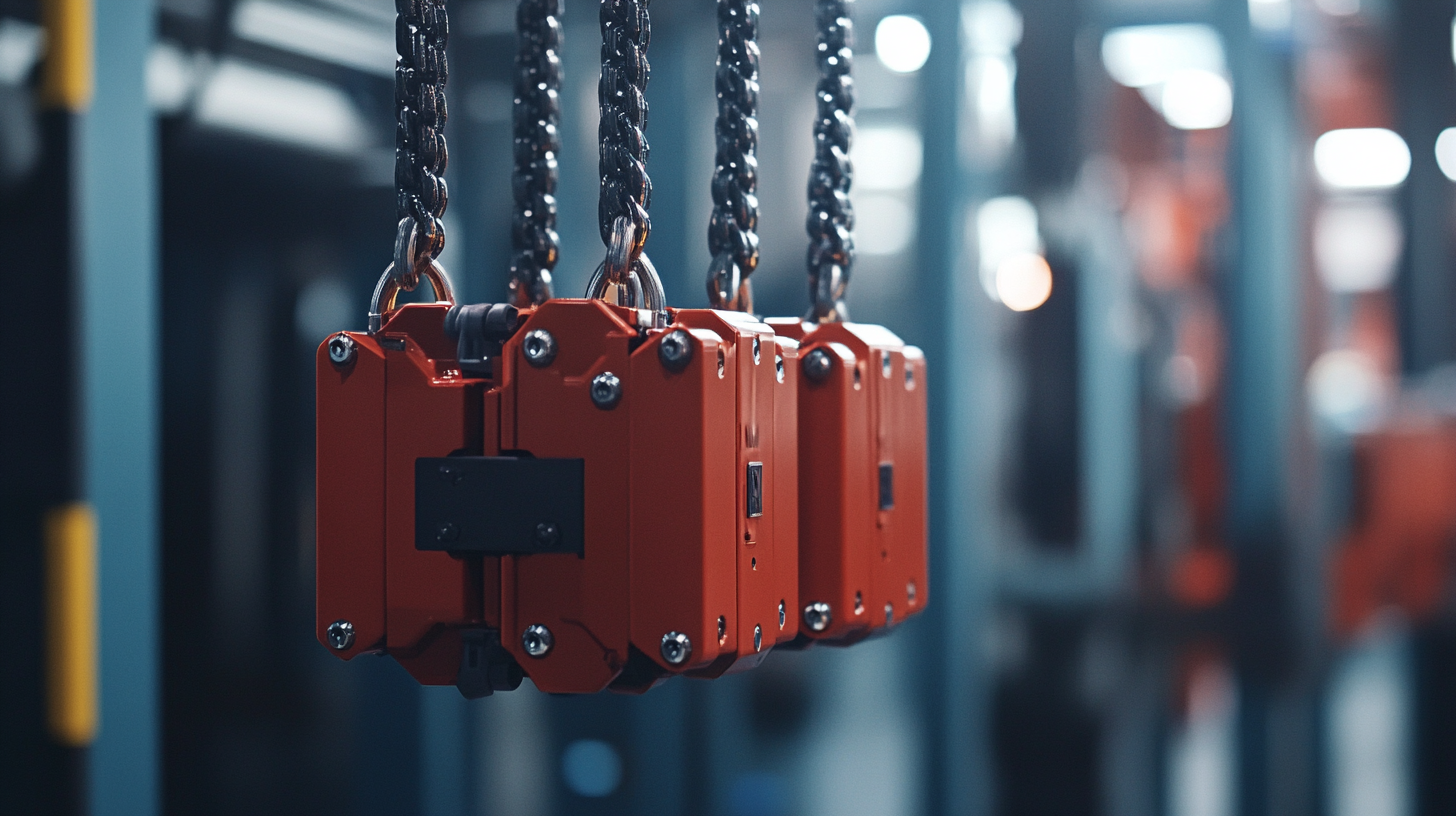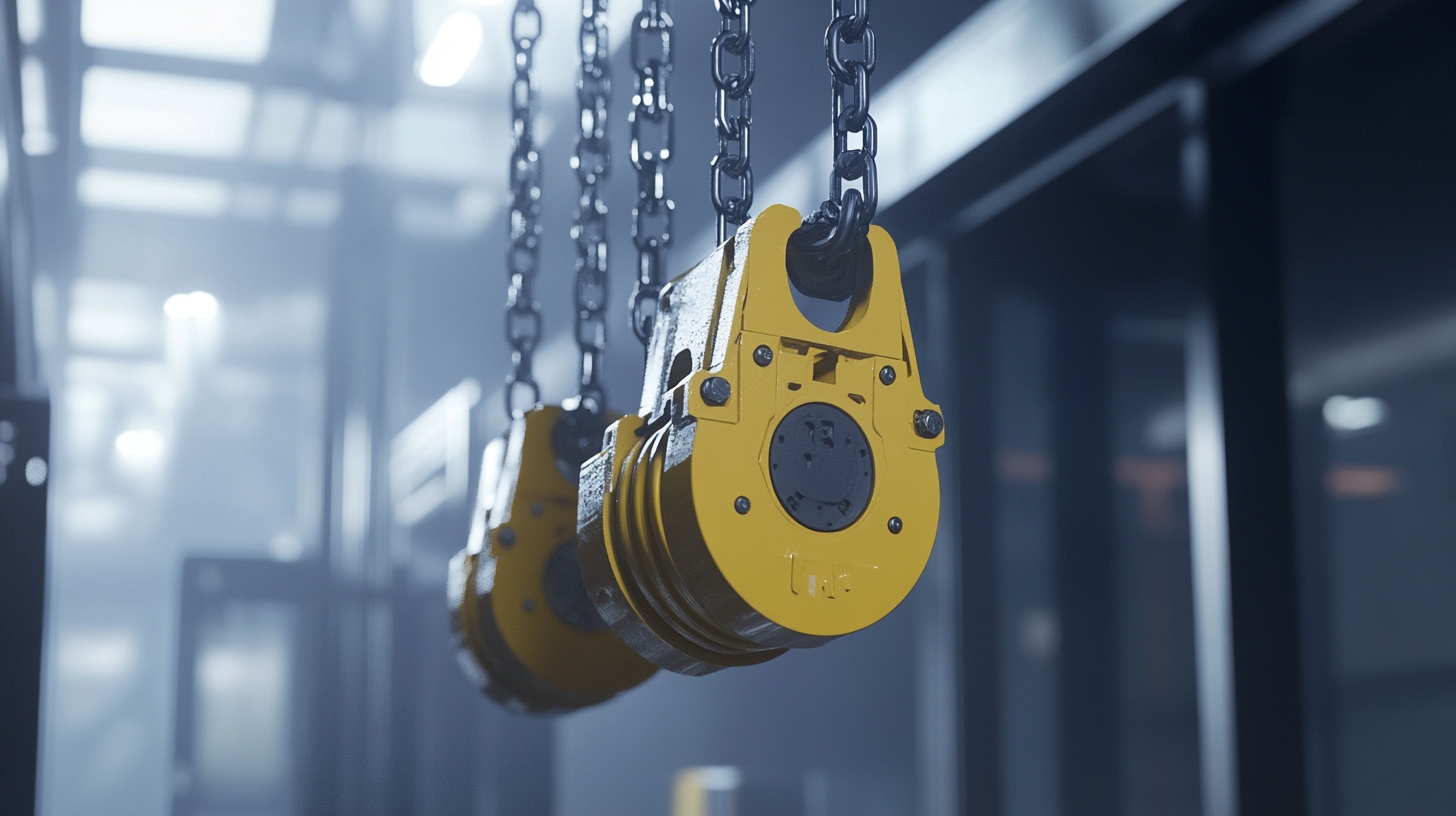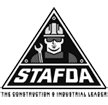
Innovating the Landscape of Pneumatic Chain Hoists for Tomorrow's Industries
As industries evolve and adapt to the ever-changing technological landscape, the tools and equipment utilized must also reflect this innovation. In this context, Pneumatic Chain Hoists are emerging as a vital component in enhancing operational efficiency and safety across various sectors. These innovative machines leverage pneumatic power to provide a reliable and efficient lifting solution, addressing the increasing demands for both productivity and sustainability in modern workflows. The capabilities of Pneumatic Chain Hoists are being redefined, paving the way for new applications and processes that can transform how industries operate.
In this blog, we will explore the latest advancements in Pneumatic Chain Hoists and their implications for the future of industrial operations. We will delve into the design improvements, technological enhancements, and potential applications that are shaping the future of lifting equipment. By understanding the innovations within Pneumatic Chain Hoists, we can uncover how they are not only meeting current industry challenges but also setting the stage for the next generation of industrial practices. Join us as we investigate the landscape of these powerful tools and their role in the industries of tomorrow.

Revolutionizing Pneumatic Chain Hoists: The Future of Material Handling
Revolutionizing pneumatic chain hoists is essential for the advancement of material handling in numerous industries. As industries push for greater efficiency and safety, the demand for cutting-edge hoisting technologies has risen significantly. Pneumatic chain hoists, known for their reliability and speed, offer unique advantages that traditional electric hoists often fail to provide. By incorporating innovative materials and smart technologies, these hoists can enhance performance while reducing maintenance costs.
Modern pneumatic chain hoists are being designed with user-centric features, including improved ergonomics, enhanced control systems, and integration with automation technology. This evolution not only streamlines operations but also minimizes the risk of workplace accidents. With features like overload protection and remote control capabilities, operators are empowered to manage heavy loads with greater precision and safety. Furthermore, the shift towards more sustainable materials in manufacturing these hoists aligns with global efforts to reduce the environmental impact of industrial operations.
As automation continues to transform the manufacturing landscape, pneumatic chain hoists are poised to play a pivotal role. Their lightweight design combined with high lifting capacity makes them suitable for various applications, from assembly lines to warehouse management. By leveraging advances in technology and materials science, the future of pneumatic chain hoists looks promising, promising enhanced efficiency, safety, and sustainability for industries moving forward. As companies look to innovate their material handling processes, these sophisticated tools will undoubtedly lead the way into a more productive future.
Innovating the Landscape of Pneumatic Chain Hoists for Tomorrow's Industries
This chart illustrates the projected increase in efficiency and adoption rates of pneumatic chain hoists across various industries over the next five years. The data showcases how innovation in design and technology is transforming material handling solutions.
Key Innovations Driving Efficiency in Pneumatic Hoist Technology
The landscape of pneumatic chain hoists is evolving rapidly, driven by innovative technologies that enhance efficiency across various industries. Recent advancements are not just about improving lifting capabilities, but also about integrating these systems into broader energy management frameworks. One notable development is the collaboration aimed at transforming end-of-life mine shafts into effective energy storage systems. This initiative exemplifies how pneumatic hoist technology can play a vital role in creating sustainable solutions while also reducing operational costs.
Key innovations in pneumatic hoisting systems focus on enhanced automation and improved material handling. These advancements leverage smart sensors and IoT capabilities, enabling real-time monitoring and predictive maintenance. Such technology not only boosts productivity but also enhances safety by minimizing human intervention in hazardous lifting tasks. The increased efficiency offered by these innovations is set to redefine how industries manage heavy loads, particularly within sectors that require reliable and adaptable hoisting solutions.
Moreover, the integration of pneumatic hoist technology in energy storage systems highlights the potential for cross-industry applications. As industries shift towards sustainability, pneumatic hoists are becoming essential in the conversion of traditional sites, like mines, into modern energy hubs. This amalgamation of technology and innovative practices is paving the way for a future where pneumatic hoists not only fulfill lifting requirements but also contribute to a greener and more efficient energy ecosystem.

Sustainability Trends in Pneumatic Chain Hoist Design
As industries increasingly prioritize environmental responsibility, the design of pneumatic chain hoists is experiencing a significant transformation. Sustainability trends are becoming crucial in the development of these systems, with a clear shift towards more eco-friendly materials and energy-efficient technologies. A recent report indicates that nearly 60% of manufacturers are now integrating sustainability into their product lifecycle, emphasizing the importance of eco-design principles from the outset.
In fluid power technologies, advancements in hydraulic and pneumatic systems are leading the way towards enhanced performance and decreased environmental impact. The rising influence of sustainability is prompting engineers to explore innovative materials and design strategies that minimize energy consumption and waste. For instance, the trend toward electromechanical actuators showcases how industries are embracing alternatives that not only improve motion control but also reduce carbon footprints significantly. Data indicates that electromechanical options can achieve energy efficiencies of up to 30% compared to traditional pneumatic systems.
Moreover, the projection for the pneumatics market in 2025 highlights a robust optimism surrounding technological advancements aimed at supporting sustainability. As organizations adapt to global environmental mandates, the integration of sustainable practices within pneumatic chain hoist design is set to become a standard requirement rather than an option. This commitment to environmentally friendly practices is reshaping the landscape of industrial lifting equipment, ensuring that the future of pneumatic chain hoists aligns with the pressing demands of sustainability.
Innovating the Landscape of Pneumatic Chain Hoists for Tomorrow's Industries
This pie chart represents the sustainability trends in pneumatic chain hoist design, highlighting the various materials and practices being adopted to enhance environmental responsibility in industry.
Enhancing Safety Features in Modern Pneumatic Hoists
In recent years, the demand for enhanced safety features in pneumatic hoists has surged, reflecting a growing awareness of workplace safety and operational efficiency across various industries. According to a report by Occupational Safety and Health Administration (OSHA), nearly 4,700 workplace fatalities occur in the U.S. each year, many of which are attributed to lifting operations gone wrong. This statistic underscores the urgent need for innovative safety enhancements in equipment like pneumatic chain hoists.
Modern pneumatic hoists are now incorporating advanced safety mechanisms such as overload protection systems, automatic shutoff features, and emergency stop buttons. The integration of these technologies can lead to a significant reduction in accidents. A study published in the Journal of Safety Research found that workplaces utilizing advanced lifting equipment saw a 25% decrease in injury rates related to lifting and rigging tasks. Moreover, the incorporation of smart technology into pneumatic hoists, with real-time monitoring and diagnostics, allows for proactive maintenance, further minimizing potential risks.
Another important aspect of modern pneumatic hoists is the implementation of ergonomic designs. Ergonomics not only improves the ease of use but also significantly enhances safety. According to the National Institute for Occupational Safety and Health (NIOSH), ergonomic interventions in the workplace can reduce musculoskeletal disorders by as much as 50%. Manufacturers are now focusing on user-centric designs that provide better control and reduce operator fatigue, leading to safer and more productive work environments. As companies continue to prioritize safety, the evolution of pneumatic hoist technology becomes imperative for tomorrow’s industries.
The Role of Automation in the Next Generation of Pneumatic Hoists
The evolution of pneumatic chain hoists is closely intertwined with advancements in automation technology. As industries increasingly turn towards automated solutions to enhance efficiency, the integration of automation into pneumatic hoists becomes paramount. This next generation of hoists not only improves productivity but also significantly reduces the potential for human error. By incorporating sophisticated automation systems, these hoists can perform tasks with greater accuracy, speed, and consistency.
One of the most exciting aspects of this innovation is the capability for remote operation. Pneumatic hoists equipped with automated control systems allow operators to manage lifting tasks from a safe distance, reducing the risks associated with manual handling. This feature is particularly beneficial in hazardous environments, where safety is a top priority. Furthermore, the data gathered during operations can be analyzed to optimize performance, predict maintenance needs, and enhance the overall reliability of the equipment.
Additionally, the advancement of smart technology within pneumatic hoists is revolutionizing their functionality. With the implementation of IoT (Internet of Things) capabilities, users can monitor operations in real-time, receive alerts for potential issues, and adjust settings remotely. This not only streamlines workflows but also allows for quick responses to any anomalies that may arise during lifting operations, thereby minimizing downtime and ensuring operational continuity in dynamic industrial settings.

Copyright ©2024 Elephant Lifting Products | All rights reserved.
38381 N Robert Wilson Rd, Gonzales, LA 70737 USA
Toll Free: (888) 844-6113 | Phone: (225) 644-6113 | Fax: (225) 644-6695
Email: sale@floralift.org




